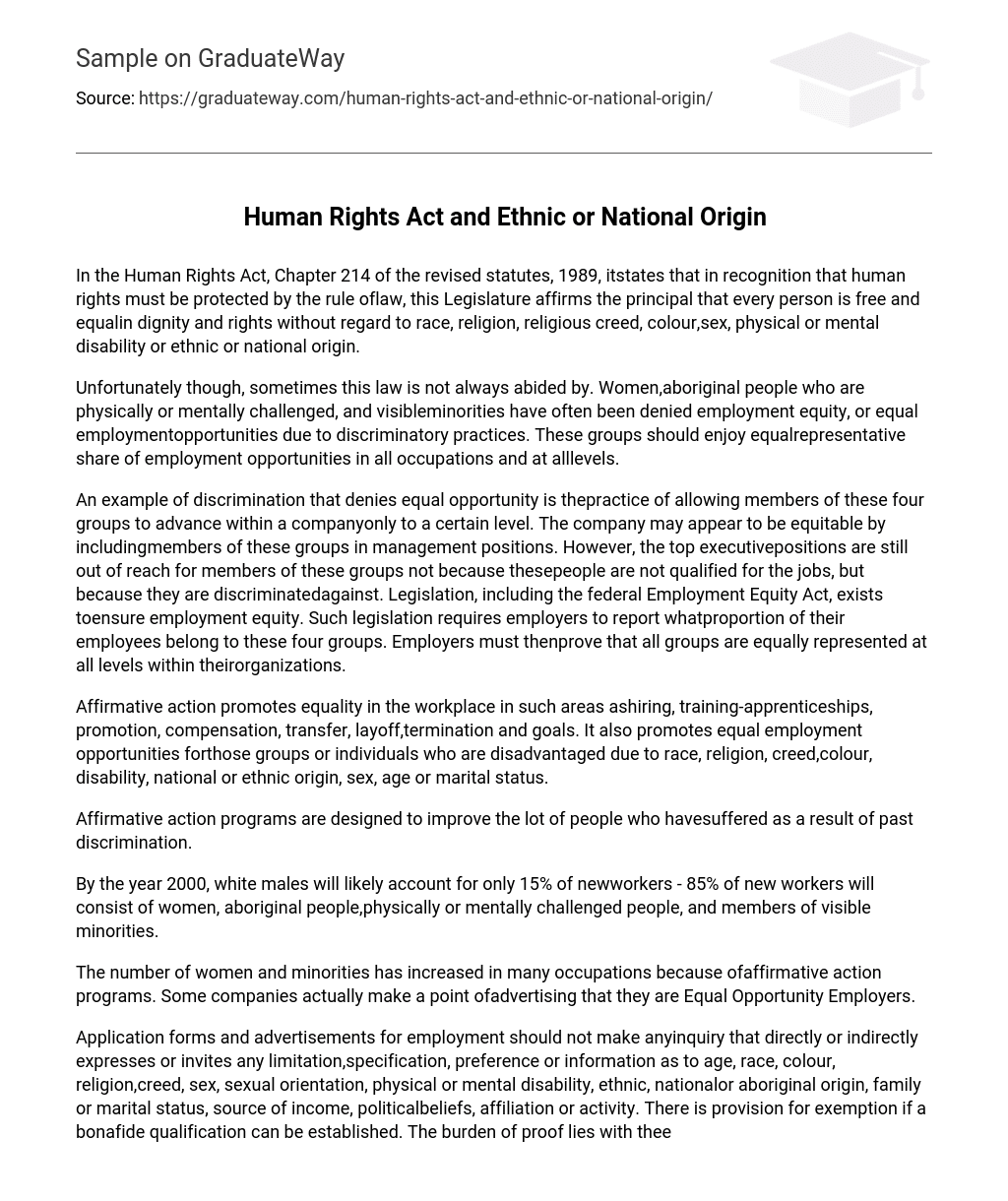In the Human Rights Act, Chapter 214 of the revised statutes, 1989, itstates that in recognition that human rights must be protected by the rule oflaw, this Legislature affirms the principal that every person is free and equalin dignity and rights without regard to race, religion, religious creed, colour,sex, physical or mental disability or ethnic or national origin.
Unfortunately though, sometimes this law is not always abided by. Women,aboriginal people who are physically or mentally challenged, and visibleminorities have often been denied employment equity, or equal employmentopportunities due to discriminatory practices. These groups should enjoy equalrepresentative share of employment opportunities in all occupations and at alllevels.
An example of discrimination that denies equal opportunity is thepractice of allowing members of these four groups to advance within a companyonly to a certain level. The company may appear to be equitable by includingmembers of these groups in management positions. However, the top executivepositions are still out of reach for members of these groups not because thesepeople are not qualified for the jobs, but because they are discriminatedagainst. Legislation, including the federal Employment Equity Act, exists toensure employment equity. Such legislation requires employers to report whatproportion of their employees belong to these four groups. Employers must thenprove that all groups are equally represented at all levels within theirorganizations.
Affirmative action promotes equality in the workplace in such areas ashiring, training-apprenticeships, promotion, compensation, transfer, layoff,termination and goals. It also promotes equal employment opportunities forthose groups or individuals who are disadvantaged due to race, religion, creed,colour, disability, national or ethnic origin, sex, age or marital status.
Affirmative action programs are designed to improve the lot of people who havesuffered as a result of past discrimination.
By the year 2000, white males will likely account for only 15% of newworkers – 85% of new workers will consist of women, aboriginal people,physically or mentally challenged people, and members of visible minorities.
The number of women and minorities has increased in many occupations because ofaffirmative action programs. Some companies actually make a point ofadvertising that they are Equal Opportunity Employers.
Application forms and advertisements for employment should not make anyinquiry that directly or indirectly expresses or invites any limitation,specification, preference or information as to age, race, colour, religion,creed, sex, sexual orientation, physical or mental disability, ethnic, nationalor aboriginal origin, family or marital status, source of income, politicalbeliefs, affiliation or activity. There is provision for exemption if a bonafide qualification can be established. The burden of proof lies with theemployer, who should apply in writing to the Human Rights Commission.
Some unacceptable pre-employment inquiries are:-indicate whether Mr., Mrs., Miss. or Ms.
-any inquiry into gender-any inquiry into sexual orientation-any inquiry into pregnancy, childbirth or child bearing plans-any inquiry as to the applicant’s spouse-request for photograph or the taking of photographs-any inquiry into religious affiliation or customs Category: History





